The essential guide to Sydney's best omakase dining
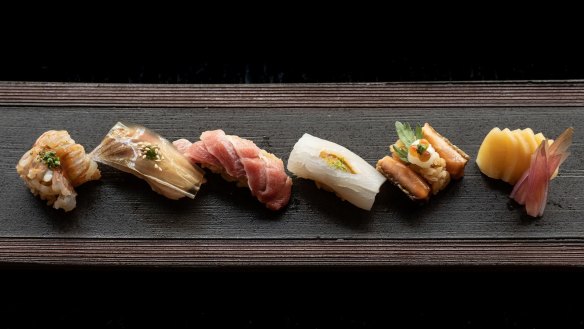
The chef's table-style of Japanese cuisine is finally entering the mainstream. Here's where to try it, plus tips on booking the most coveted seats.
By the time you get to the eel course, having made your way through the sashimi platter, the crab served in a persimmon, the soup, the wagyu and about 10 courses of hand-shaped rice with fish (nigiri), you'd think the spectacle might have worn off. But then Ryuichi Yoshii brings out the sauce.
Having pressed each slice of anago, or sea eel, around his vinegared rice, he reaches for a ceramic pot and drizzles a thick, dark dressing (a sweet eel-infused soy sauce reduction) over the top.
As he hands it over, each guest pauses to admire the ingredient the sushi master has nurtured for the past 28 years. One bite, then a hush.
Pristine in his cap, tie and white chef's coat, Yoshii runs what is, at $350, Sydney's most expensive omakase restaurant. And although the dining experience is not new to our shores, Yoshii's Omakase – a 10-seater inside Crown – represents something of a high-water mark for a style of cuisine finally entering the mainstream.
Sushi rice is very, very important. If the rice is no good, then the sushi's already no good.Ryuichi Yoshii
Derived from a phrase meaning "I'll leave it to you", omakase hands control to the chef, who'll typically prepare a multi-course menu according to the seasons, the guests' preferences, and their own sensibilities.
The genre has familiar dishes – a chawanmushi (savoury custard) early on, a soup at the end – but really these are diversions from five to 15 courses of each restaurant's special "thing". That could be yakitori, tempura or, in the case of Choji Yakinuku in Chatswood, wagyu. Ultimately, though, sushi remains the signature.
In Sydney, what began as an underground movement has now transformed into an obsession. Where once there were just a handful of chefs offering omakase, often as a quiet addition to their regular menus, that number is now closer to 20.
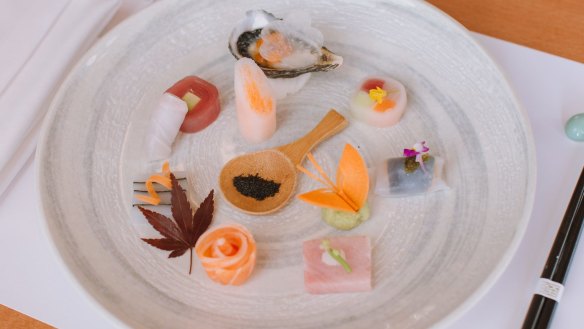
As their popularity has grown, so has the prevalence of purpose-built venues inspired by the high-end omakase culture in Japan, with room for just a few diners at a time and bookings that fill up months or sometimes years in advance.
Someone who's been there from the early days is Michael Shen. With his blog and now Instagram I'm Still Hungry (last count 45,000 followers), Shen speaks to a passionate subculture, whose members might book three or more omakase a month (Shen is at 15 for the year so far).
Back in 2014, though, Shen was just a sushi-train fanatic. It was an invitation from Chase Kojima, of Sokyo, to sit at his new omakase counter, that changed everything.
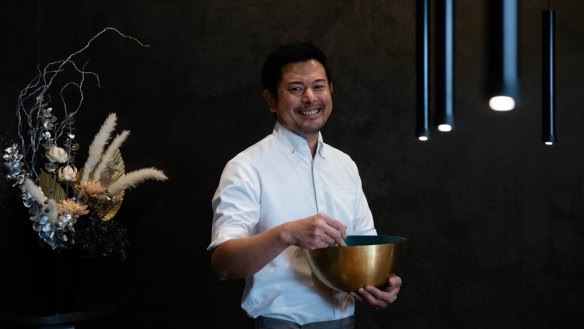
"Sokyo was one of those moments where you're like, oh my god there's so much more to sushi than the stuff you can get at a train or a mid-range restaurant," says Shen.
At Sokyo's counter, chef Takashi Sano runs a 23-course omakase with trademark precision, treading a line between tradition and innovation that's made it one of the city's most coveted bookings (currently, the waitlist is eight months).
"Back then you could book like two weeks in advance – those were the glory days, seriously, two weeks!" he says. "After that I sought out as much of that stuff in Sydney as possible. At the time there wasn't a whole bunch, then about two or three years later they started sprouting."
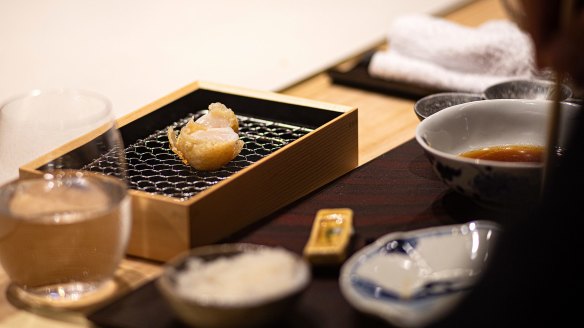
Plenty of this sprouting was happening in the suburbs – Sashimi Shinsengumi in Crows Nest; Kisuke in Willoughby – while Azuma and Masuya began building loyal followings in the CBD.
But the past year has marked a different chapter entirely. Just ask Hideaki Fukada. Since June 2020 the chef has opened two omakase restaurants in Darling Square, one serving sushi, the other tempura. Fukada sees the demand stemming from diners missing travel, as well as the fact that smaller venues feel safer in a pandemic.
More so, though, it's down to the public finally appreciating the product. "Five years ago omakase always seemed too expensive," he says. "But now, everybody knows the ingredients – very simple ingredients, and they know the difference."
Omakase is about that difference. It's why Chase Kojima is at the fish market at 5am to meet Narito Ishii, seafood buyer for Sydney's best Japanese chefs. "COVID changed everything," says Kojima, examining mackerel as Ishii's team starts breaking down today's southern bluefin tuna.
"All the restaurants closing down are the mid-range restaurants. All the super-cheap, all the super-high-end, they're doing fine. I think now with social distancing, people want a smaller environment – and then once you experience real omakase, you can't go back."
Kojima pauses as Ishii takes a belly loin, slices through, then exposes the flesh: akami, the deep red, at the top, the lighter chu-toro in the centre, then the o-toro, tending to white, at the base. This is the money shot, one bound to flood Kojima's DMs with pleas for a spot at Sokyo's counter.
The effect of social media on the scene can't be overstated, first in spreading word and filling bookings, then in increasing demand for luxury ingredients – gold leaf, caviar, sea urchin, toro – no matter how rare.
Kojima likens it to the demand for high-end fashion. "It's not even about price anymore. It's 'I want the cool shit'." It's no coincidence that a hefty portion of diners taking up seats at omakase counters do it in Balenciaga sneakers.
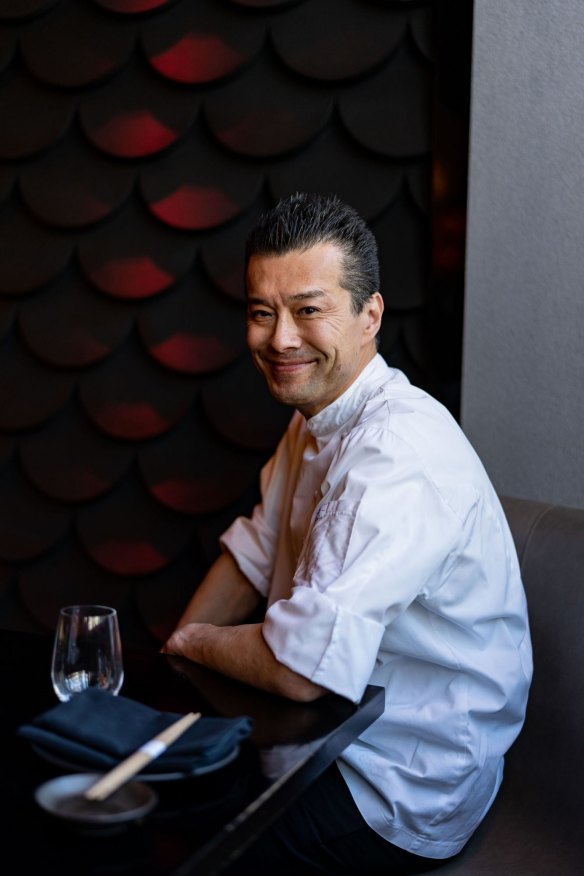
For Kojima and Sano (pictured right), tuna is such an integral element as to be the driving force behind their menu. "We are obsessed with tuna," says Kojima. "The toro from the best tuna is the most premium cut of fish from the sea, and also the most delicious – we season our rice to this one single piece of sushi."
This is a crucial observation. Yoshii goes as far as to call fish a secondary concern. "I'm more focused on the rice," he says. "Sushi rice is very, very important. Of course fish is too, because sushi is rice and fish combined together, but if the rice is no good, then the sushi's already no good."
At Yoshii's Omakase, the rice is cooked under pressure in a claypot over charcoal. The grains are then seasoned with sake-lees vinegar and kept in a basket to Yoshii's right. Watch him as he shapes a handful of rice, deftly inviting the grains to cling together with a clap and a flourish, and see decades of training revealed in seconds.
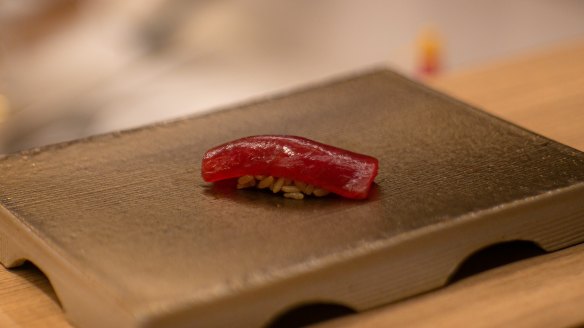
Whip around the city's latest openings and this level of dedication is consistent, each chef's personality revealed in the smallest touches. At Haco in Surry Hills, it's in chef Kensuke Yada's control of temperature for his tempura. At Chaco in Potts Point, which runs a yakitori omakase, it's Keita Abe's eye for when to turn each skewer. At Sushi Oe in Cammeray, it's in Toshihiko Oe's nigiri-work as much as his infectious personality (Oe's six seats, incidentally, have become the toughest to book in the city).
So for Shen, after many years and menus, what is it that keeps him in the hunt? "It's that moment when you put a piece into your mouth and you go 'whoa'. But I feel like that's more applicable to newcomers," he says.
"As for what gets me to return? Consistency is really important, but also it's being able to deliver whatever edge these chefs have and deliver it with every visit. That's the sort of thing that keeps me going."
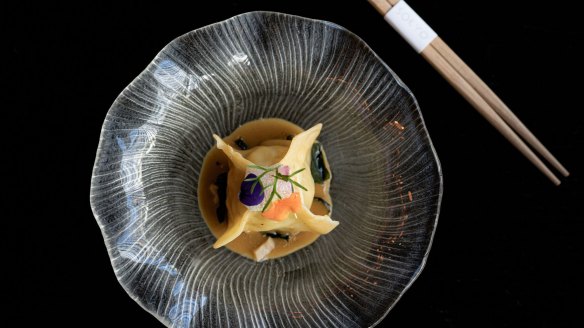
A guide to omakase in Sydney
Kisuke
Morita Yusuke and his wife run this intimate six-seater in Potts Point that keeps things mostly classic, barring a course of grilled wagyu with uni.
Cost: $175
Book: Washoku Lovers.
50 Llankelly Place, Potts Point
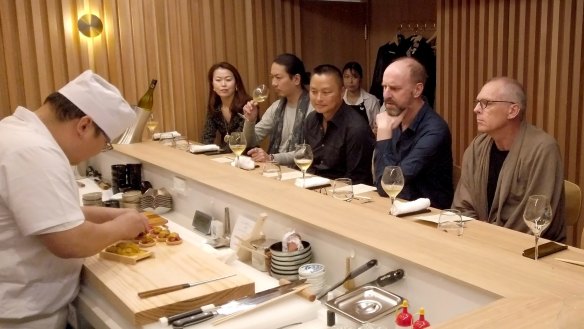
Kuon Omakase
Hideaki Fukada's 11-seater strikes a balance between classic and forward-thinking, with sushi comprising about half the 20-or-so courses.
Cost: $200
Book: Online bookings open first Tuesday of every month.
Shop 20, 2 Little Hay Street, Sydney, kuon.com.au
Sokyo
Takashi Sano heads one of the city's toughest bookings, his mirror-edged knives scoring and slicing around 15 pieces of sushi across an innovative 23-course menu.
Cost: $185
Book: Booked until 2022. Regulars have first dibs.
80 Pyrmont Street, Pyrmont, star.com.au/sokyo
Sushi E
Dan Hong oversees a menu run by Michael Fox and Ha Chuen Wai that has one eye on tradition and the other on deliciousness. The monaka dessert is a highlight.
Cost: $170
Book: Online or by phone (02 9114 7314).
252 George Street, Sydney, merivale.com/venues/sushie/
Sushi Oe
One of the best in the business, Toshihiko Oe serves 30 or more courses – most of them sushi – to just six lucky guests at once.
Cost: $180
Book: By text, monthly (0451 970 984). Check @sushiooe on Instagram for updates.
Shop 16, 450 Miller Street, Cammeray
Yoshii's Omakase
It may be the most expensive omakase around, but Ryuichi Yoshii has the experience, skill and showmanship to make every dollar count.
Cost: $350
Book: Online bookings released the 1st of each month.
Level 2, 1 Barangaroo Avenue, Barangaroo, crownsydney.com.au/yoshii-omakase
Rocking the suburbs
Harada
Yoshinobu Harada brings a creative streak to the format, nodding to his izakaya background and finishing with a killer ramen broth.
Cost: $160
Book: Online, two weeks ahead.
18A Wentworth Street, Glebe, harada.net.au
Hachioji
Taiwanese chef Benson Pang can ruffle feathers, but the rewards can be revelatory. Extra points for being one of the few venues with a female chef behind the counter.
Cost: $150-$220
Book: Online, two weeks ahead.
Shop 2, 56-58 Frenchs Road, Willoughby, hachiojiwilloughby.com.au
Sashimi Shinsengumi
COVID meant Shinji Matsui had to cancel nine months of bookings for this legendary 12-seater. Once they're reallocated, they'll reopen the phones. Currently doing takeaway.
Shop 5, 7-11 Clarke Street, Crows Nest, facebook.com/sashimishinsengumi
Tobikiri Kappou
A coastal-themed restaurant running a kappo omakase on Mondays, where Shuhei Kodama plays it fast and loose in a suburban setting.
Cost: $200
Book: Washoku Lovers two months ahead.
Shop 4, 48 Yeo Street, Neutral Bay
Something different
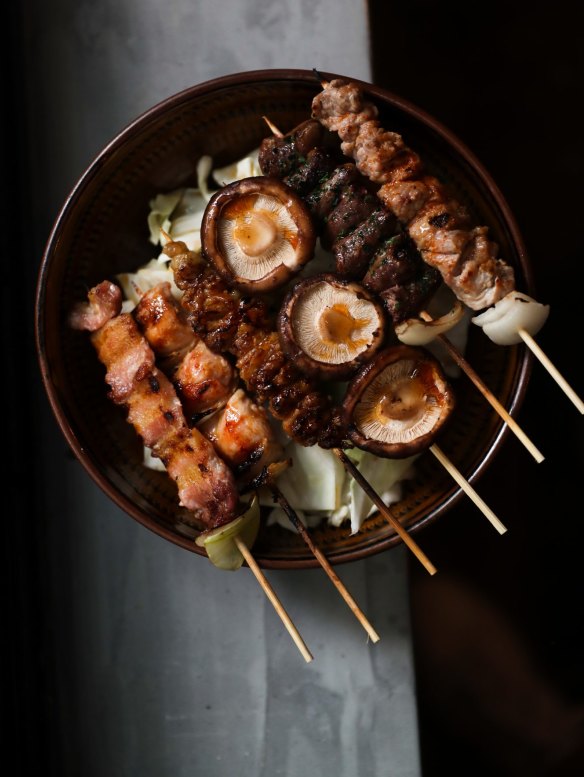
Chaco
Keita Abe's yakitori den started omakase during COVID. Guests are served sticks straight off the coals, along with luxed-up courses heavy on truffles and foie gras.
Cost: $160
Book: Online, two weeks ahead.
186-188 Victoria Street, Potts Point, chacobar.com.au
Choji Yakiniku
Takashi Yamamoto and Tomoyuki Matsuya made waves with their wagyu omakase at this barbecue restaurant. It's currently on hold, but rumours are it could resurface in Rose Bay.
228 Victoria Avenue, Chatswood, chojiyakiniku.com.au
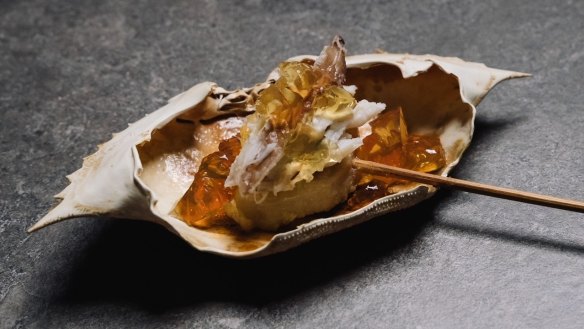
Haco
Abe's 12-seat tempura restaurant headed by Kensuke Yada. Half tempura, half kushiage (panko-crumbed), with smartly executed seafood courses to start.
Cost: $120-$185
Book: Online, with bookings released monthly.
Shop 102, 21 Alberta Street, Sydney, hacosydney.com.au
Gold Class Daruma
An all-rounder that remains one of the few still under $100. Try their sake "omakase", too.
Cost: $99
Book: Online, three weeks ahead.
The Grace Hotel, level 1, 77 York Street, Sydney, goldclassdaruma.com.au
Gou Sushi
Hong Kong-born Rio Lau Chun Man runs a decidedly untraditional omakase at this sushi train on weekends. Different, sure, but good value at $90 a head.
Book: Via Instagram @gousushi.syd
Shop 2, 30-34 Chalmers Street, Surry Hills
Raita Noda
Chef Raita Noda oversees this eight-seater, which weds Japanese tradition with modern sensibilities.
Cost: $170
Book: Online, two months ahead.
Shop 1, 222 Riley Street, Surry Hills, raitanoda.com.au
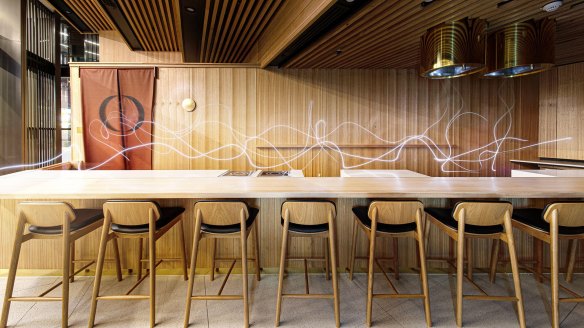
Tempura Kuon
Hideaki Fukada's second venue, dedicated entirely to tempura. Ten guests receive course after course of lightly battered delicacies in a sleek, refined setting.
Cost: $230
Book: Online bookings open first Wednesday of every month.
SE04, Little Hay Street, Haymarket, tempurakuon.com.au
Restaurant reviews, news and the hottest openings served to your inbox.
Sign up